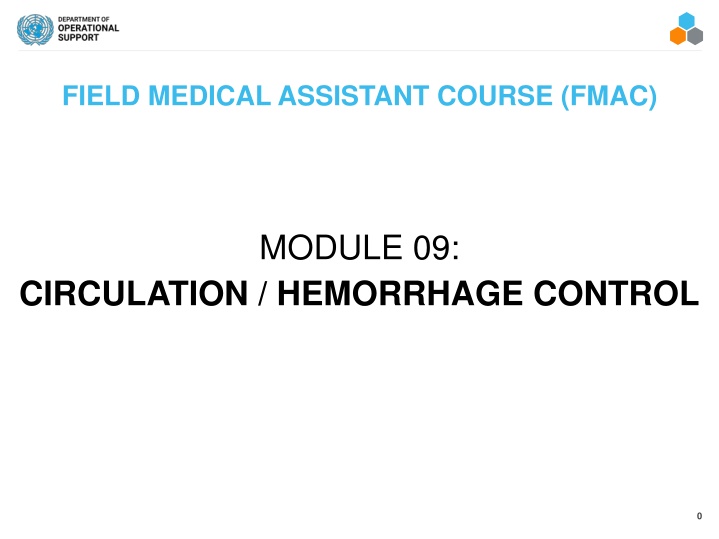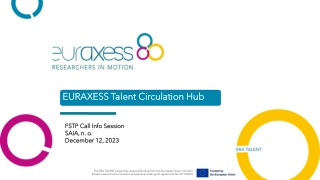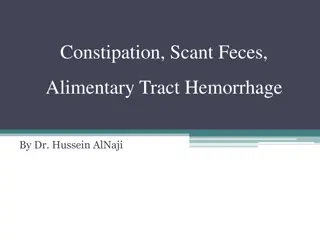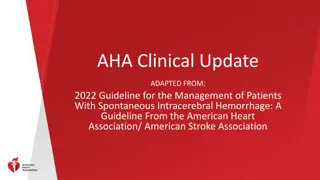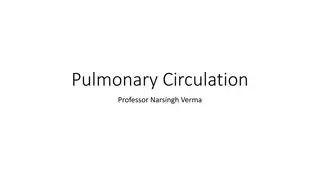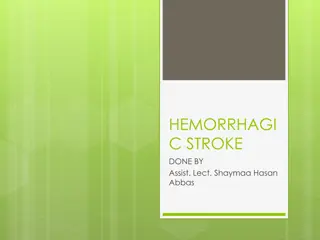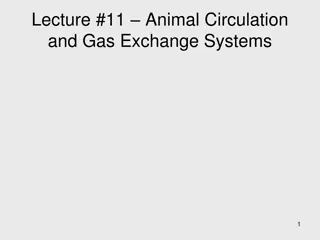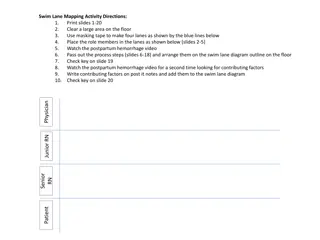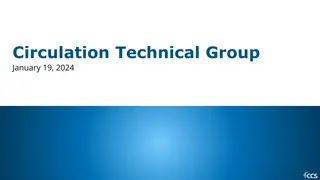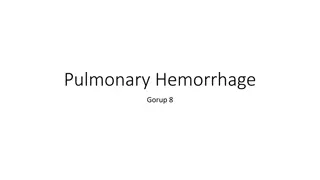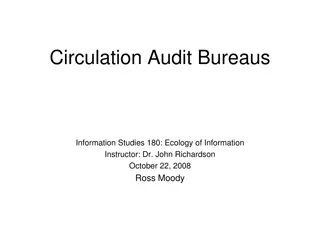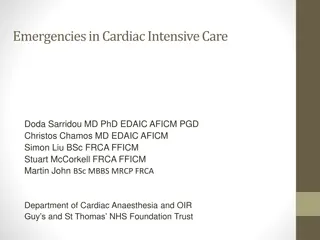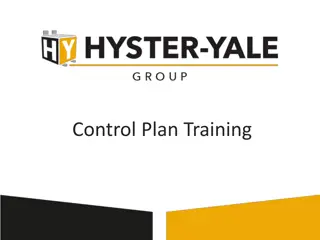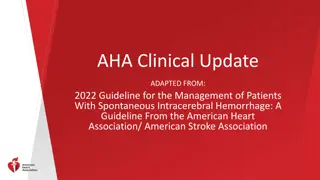Circulation and Hemorrhage Control
This content focuses on training modules related to circulation and hemorrhage control in Tactical Field Care for medical personnel. It covers key objectives, phases of care, and priorities for managing life-threatening situations such as massive bleeding. The material emphasizes the principles of wound packing, applying pressure bandages, and identifying pelvic fractures in emergency scenarios.
Download Presentation

Please find below an Image/Link to download the presentation.
The content on the website is provided AS IS for your information and personal use only. It may not be sold, licensed, or shared on other websites without obtaining consent from the author.If you encounter any issues during the download, it is possible that the publisher has removed the file from their server.
You are allowed to download the files provided on this website for personal or commercial use, subject to the condition that they are used lawfully. All files are the property of their respective owners.
The content on the website is provided AS IS for your information and personal use only. It may not be sold, licensed, or shared on other websites without obtaining consent from the author.
E N D
Presentation Transcript
FIELD MEDICAL ASSISTANT COURSE (FMAC) MODULE 09: CIRCULATION / HEMORRHAGE CONTROL 0
TACTICAL FIELD MEDICAL AID (TFMA) ROLE-BASED TRAINING SPECTRUM ROLE 1 CARE NONMEDICAL PERSONNEL Buddy First Aid Field Medical Assistant You are HERE MEDICAL PERSONNEL Paramedic Nurse Doctor 1
STUDENT LEARNING OBJECTIVES TERMINAL LEARNING OBJECTIVE T10 Given a combat peacekeeping or non-combat peacekeeping scenario, perform haemorrhage control during Tactical Field Care in accordance with TFMA Guidelines EO59 Identify the principles of wound packing and applying pressure bandages EO60 Demonstrate wound packing and applying a pressure bandage EO61 Identify progressive strategies, indications, and limitations of controlling external hemorrhage in Tactical Field Care EO62 Identify the signs, symptoms, and considerations of a pelvic fracture 2
Three PHASES of TFMA 2TACTICAL FIELD CARE 3TACTICAL EVACUATION CARE 1CARE UNDER FIRE COVER AND CONCEALMENT RETURN FIRE AND TAKE COVER Basic Management Plan: Maintain tactical situational awareness Triage casualties as required MARCH PAWS assessment More deliberate assessment and treatment of unrecognized life- threatening injuries: Pre-evacuation procedures Continuation of documentation Quick decision-making: Consider scene safety Identify and control life- threatening bleeding Move casualty to safety NOTE: This is covered in more advanced TFMA training! YOU ARE HERE 3
TACTICAL FIELD CARE MARCH PAWS DURING LIFE-THREATENING AFTER LIFE-THREATENING MASSIVE BLEEDING #1 Priority PAIN AIRWAY ANTIBIOTICS RESPIRATION WOUNDS CIRCULATION SPLINTING HYPOTHERMIA / HEAD INJURIES 4
HEMORRHAGE CONTROL IN TFC HEMORRHAGE CONTROL IN TACTICAL FIELD CARE Video can be found on DeployedMedicine.com 5
HEMORRHAGE CONTROL PELVIC FRACTURES Pelvic fracture may be suspected if the casualty's injuries are a result of blunt force or blast with ONE OR MORE of the following: Physical signs suggesting a pelvic fracture: Pelvic pain Major lower limb amputationOR lower near amputations Deformities, penetrating injuries, bruising near the pelvis Pelvic instability or crepitus (crinkly or grating feeling or sound under the skin) Unconsciousness or shock If a pelvic fracture is suspected, the casualty WILL REQUIRE advanced evaluation by medicalpersonnel 6
HEMORRHAGE CONTROL REASSESSMENT Reassess all PREVIOUSandCURRENT hemostatic dressings applied and ensure they are tight and effective If ineffective, apply a secondTQside-by-side with the first Reassess all PREVIOUSandCURRENThemostatic dressings applied for effectiveness If you placed a TQ above a casualty s elbow, for instance, you should expect to find no pulse at the wrist below if the TQ was properly applied 7
HEMORRHAGE CONTROL STRATEGIES AND LIMITATIONS EARLY CONTROL OF SEVERE HEMORRHAGE IS CRITICAL TFMA recommended hemostatic dressings are to be applied directly to the skin in TFC 2-3 inches above the bleeding site Casualty s hemorrhage control interventions must be FREQUENTLY REASSESSED to ensure continued hemorrhage control DO NOT EVER APPLY IT AND FORGET IT! 8
HEMORRHAGE CONTROL WOUND PACKING AND PRESSURE DRESSING Identify the exact source of bleeding Pack the wound Secure the bandage If the bandage has a pressure bar, pull the bandageTIGHT, and reverse it back over the top of the pressure bar, forcing it down onto the pad Apply direct pressure for 3 MINUTES 9
HEMORRHAGE CONTROL WOUND PACKING KEEP PRESSURE Identify the exactsource of bleeding and APPLY directpressure as a temporary measure UNTIL gauze is placed Pack the wound maintaining CONSTANT direct pressure at the source of bleeding within 90 SECONDS to be effective HOLD direct pressure on the gauze over the wound for at least 3 MINUTES (this is necessary, even with the active ingredient in hemostatic dressings) When packing a large wound, more than one hemostatic gauze and/or additional gauze may be needed Carefully observe to determine if bleeding has been controlled Once you are sure the bleeding has stopped, apply a pressure bandage 3 MINUTES 10
HEMORRHAGE CONTROL PRESSURE BANDAGE REASSESSMENT Key Points: Check for circulationBELOW the pressure bandage by feeling for distal pulse (a pulse below the bandage) If the skin BELOW the pressure bandage becomes cool to the touch, bluish, or numb, or if the pulse below the pressure dressing is no longer present, the pressure bandage may be tootight If circulation is BLOCKED or STOPPED, loosen and retie the bandage Dressings and bandages should be reassessed and checked routinely and EVERY TIME a casualty is moved 11
HEMORRHAGE CONTROL IF THE PRESSURE BANDAGE IS INEFFECTIVE If the pressure bandage or hemostatic dressing is ineffective, APPLYa hemostatic dressing 2-3 inches above the bleeding site If the pressure bandage is ineffective AND/OR blood soaked, REPLACE pressure dressing with hemostaticdressing Pack the wound, maintaining CONSTANT direct pressure at the source of bleeding within 90 SECONDS to be effective 12
PRESSURE BANDAGE PRESSURE BANDAGE Video can be found on DeployedMedicine.com 13
SKILL STATION Circulation/Hemorrhage Control (Skills) Wound Packing with Hemostatic Dressing and Pressure Bandage 14
SUMMARY If not already done, clearly mark ALLTQs with the time of TQ application and document that on the Casualty Card Check for radial pulse Assess for shock 15
CHECK ON LEARNING During Circulation in the MARCH PAWS sequence, what interventions should be reassessed? What are the signs and symptoms of a pelvic fracture? 16
